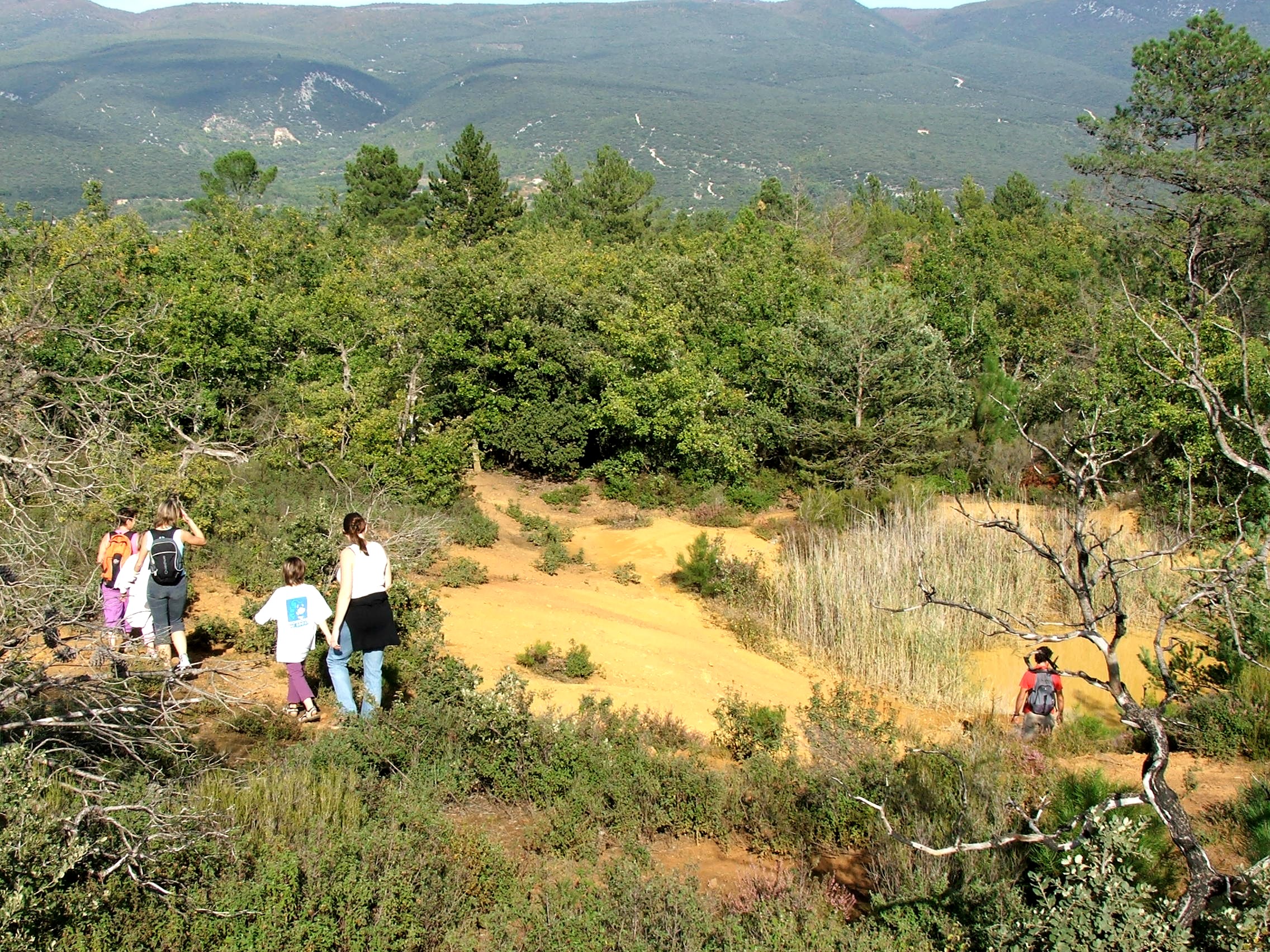
La Bruyère, the sensitive area!
"A special place to discover some symbolic species like Pelobates Cultripes toads or bats. The hill of La Bruyère is a real reservoir of biodiversity." Mathieu Berson, Natura 2000 Market researcher at the Luberon RNP.
6 points of interest
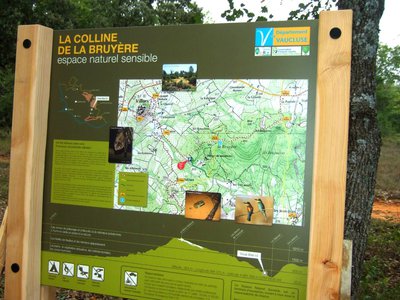
Panneau d'accueil - ©Eric Garnier - PNR Luberon  Flora
FloraENS de La Bruyère
The hill of La Bruyère received the departmental label sensitive natural area (SNA) in 2005. In this context, several plots were purchased by the Luberon Regional Park and the Conservatory of natural areas in Provence-Alpes-Côte d'Azur, in a natural heritage preservation objective. These courses are open to the public only on marked trails and within siliceous preservation of this unique island.

Vue sur Villars - ©Eric Garnier - PNR Luberon  Panorama
PanoramaThis path is of gold, ochre and vermilion ...
This route, This route, away from the Calavon, flowing between the massifs of the Monts-de-Vaucluse to the north and Luberon to the south, enters the wooded hill of La Bruyère rising above this agricultural valley dominated by vineyards. It includes ochreous soils and cliffs quite colourful, hidden in part by a woodland takeover. This vegetation is used to sandy soils which are a minority in this limestone Provence.

Front de taille ocrier érodé - ©Eric Garnier - PNR Luberon  Flora
FloraLa Bruyère hill
Like a siliceous island in the middle of a limestone ocean, the hill of La Bruyère (listed and labelled as an environmentally sensitive area) contains a flock of siliceous (silica-loving), acid-loving (likes acid soils) and psammophile (preferring sand) plants. You can come across many species of amphibians (like the Western Spadefoot), birds (such as the European Bee-eater) and bats (like the Greater or the Lesser Horseshoe Bat, the Common Bent-wing Bat).
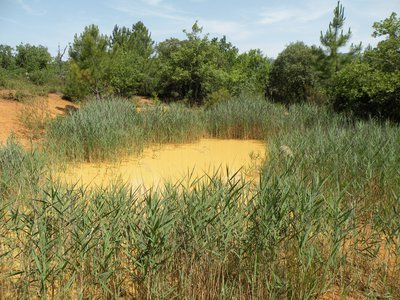
La mare au printemps - ©David Tatin  Fauna
FaunaTrou des Américains pond
This wetland is rooted in the ochre activity of the site and served to store the water used for washing the ochre. This is one of the best preserved ponds of the Luberon Regional Nature Park which is a part of the known breeding sites of Western Spadefoot (or Spanish Spadefoot Toad). This rare and vulnerable species in France is considered near threatened globally. With "spades" in its hind feet, it hides in the sand until it rains!
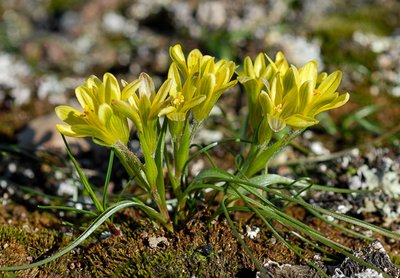
Gagée de Bohème - ©DR-Floréalpes  Flora
FloraAn original flora
Associated with a Mediterranean climate, the distinctive geology of the hill of La Bruyère, consisting of ochre and sandstone of the Cretaceous, enables a very specific and diverse flora to thrive. The vegetation here is composed of a Holm oak associated with a Scots pine and typical species of Heath,: Common heather, Laurel-leaved rock rose, Broom heather. These species are very different from those in neighbouring massifs.
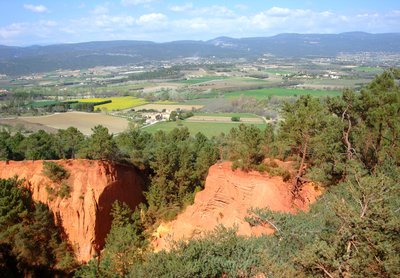
Espace boisé de feuillus - ©Eric Garnier - PNR Luberon  Fauna
FaunaForests as guides...
The maintenance and development of woodlands and deciduous hedges is very important for bats. These areas serve as their hunting grounds and above all, as reference points. Some species are able to make a 5km detour to reach two places a kilometre apart only because they prefer to follow a straight line of hedges rather than to cross an open space.
Description
Once on the small bucolic car park of La Bruyère, pass behind the information panel on the ENS (sensitive natural area) and take the path going slightly left. At the first intersection, turn right and climb gently through the trail (GR). Continue to the top of the hill. Leave a track to the right and reach the crossroads ''Trou des Américains'' (sign-post).
1 - Take a sharp right on the path that winds in the heather and reach the water hole (interpretation panels). Continue beyond the copper red path. Don't miss the path below going to the right. Continue straight downhill. Directly below the road, head left then come out to the right on the pavement.
2 Take the road to the right, let the PR to the left and continue straight. Pass the entrance of the holiday center and climb the right track to return to the starting point.
- Departure : Car park of La Bruyère, Villars
- Arrival : Car park of La Bruyère, Villars
- Towns crossed : Villars
Forecast
Altimetric profile
Recommandations
Make sure to stay on the paths and trails; the site of La Bruyère is very sensitive to erosion, trampling and disturbance of species. Refrain from any picking (flora, ochre).
This environmentally sensitive area (ESA) is an exceptional territory, open to all under everyone's responsibility. Thank you for respecting this.
Information desks
House of the Luberon Regional Nature Park
60, place Jean Jaurès, 84400 Apt
In the heart the old town centre of Apt, the House of the Luberon Regional Nature Park welcomes you in a town house of the 18th century. The permanent exhibition of the geology museum has a rich collection of fossils evidencing the geological history of the Luberon.
On sale at the shop: books, maps, guidebooks, games, posters...
Open Monday to Friday from 8:30 am to 12:00 pm and from 1:30 pm to 6 pm (and on Saturday, depending on the program). Free admission.
OTI Pays d’Apt Luberon
788 avenue Victor Hugo, 84400 Apt
Du 1er avril au 30 septembre
Ouvert du lundi au samedi de 9h30 à 12h30 et de 14h à 18h.
Juillet et août : Ouvert dimanche et jours fériés de 9h30 à 12h30
Du 1er octobre au 31 mars
Ouvert du lundi au mardi et du jeudi au samedi de 9h30 à 12h30 et de 14h à 18h.
Fermé le mercredi, dimanche et jours fériés.
Access and parking
At 9km North of Apt by the D900, D943, D111 and VC des Trécassats.
Parking :
More information
Report a problem or an error
If you have found an error on this page or if you have noticed any problems during your hike, please report them to us here:


